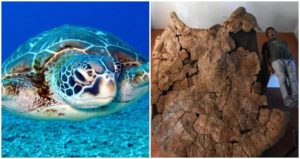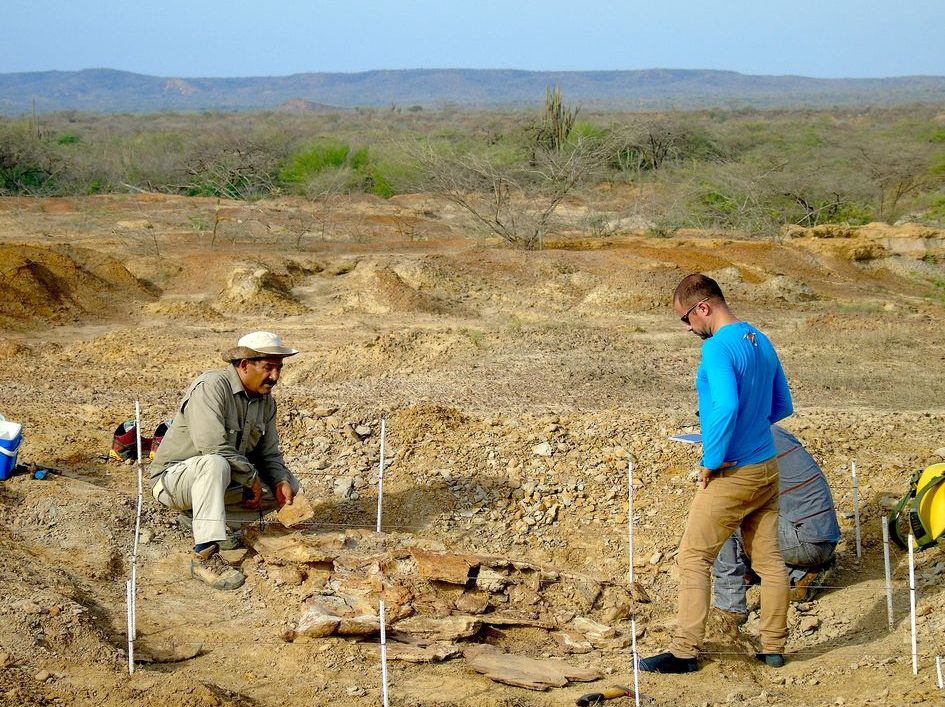
Researchers Find 13-Million-Year-Old Turtle Fossil That Is The Same Size Of A Car
Researchers from the Tatacoa Desert in Columbia and the Urumaco Region of Venezuela unearthed a turtle fossil that is the same size as a vehicle.
The Stupendemys geographicus, a type of turtle, is believed to have roamed the region of Columbia and Urumaco around 13 and 7 million years ago.

The shell of the turtle alone is around 3-meters tall, which means the turtle weighed the equivalent of a saloon car.
The BBC reports that the male turtle’s lower jaw bone, which was found alongside the shell, made the researchers believe that the massive turtle lived at the bottom of lakes and rivers.
Its main diet was off small animals, fruits, seeds, and vegetation.
The Stupendemys geographicus also had sturdy forward pointing horns that were found near its neck, the researchers said it was a way to protect itself.
One of the fossils that the researchers found had a giant crocodile tooth embedded in it, which suggests that it was used for fighting off rivals.

Edwin Cadena, a paleontologist with the Universidad del Rosario in Bogotá, led the research, which was published in the journal Science Advances.
Talking about the Universidad del Rosario in Bogotá, Cadena said, “Stupendemys geographicus was huge and heavy.”
He added, “The largest individuals of this species were about the size and length of a sedan automobile if we take into account the head, neck, shell and limbs.”
Stupendemys geographicus fossils were first unearthed in the 1970s, but this is the first time that experts discovered a comprehensive understanding of the species, which grew up to 4 meters in length and weigh up to 1.25 tons.
The Stupendemys geographicus is believed to have inhabited a huge area of wetlands across Columbia, Brazil, Peru, and Venezuela.

Talking about its diet, Cadena said, “Its diet was diverse, including small animals – fishes, caimans, snakes – as well as mollusks and vegetation, particularly fruits and seeds.”
He added, “Putting together all the anatomical features of this species indicates that its lifestyle was mostly in the bottom of large freshwater bodies including lakes and large rivers.”
Imagine if these things were still roaming around today.